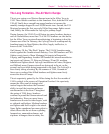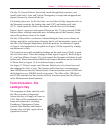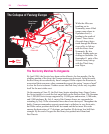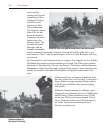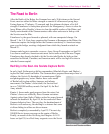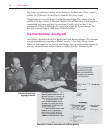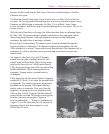
154
Close Combat
Dwight D. Eisenhower
(1890-1969). Eisenhower’s
distinguished military career
began with his graduation
from West Point in 1915.
Although he was forced to
remain in the U.S. through-
out World War I, he formed
America’s first tank corps in 1918. By the end
of the war he commanded 10,000 men. He
performed brilliantly at the Army Command and
General Staff College, then served as Chief of
Staff to General MacArthur in the Philippines.
By 1941 Eisenhower was promoted to Briga-
dier General and became Chief of Staff of the
Third Army. In 1942 General George Marshall
passed over hundreds of more senior officers
to make Eisenhower a major general in charge
of the Operations Branch in Washington.
Eisenhower was sent to Britain to lead the U.S.
Army staff there, and then was chosen to lead
the Allied landings in French North Africa,
where for the first time he heard shots fired in
anger. In December 1943 Eisenhower was
named Supreme Allied Commander in charge
of the impending invasion of Europe—Opera-
tion Overlord; eventually he commanded a
force of more than 4.5 million men.
As Supreme Allied Commander, Eisenhower
performed a task of supreme importance:
keeping the Alliance and its many forceful
personalities—most notably Montgomery and
Patton—focused not on their differences, but
on working together to win the war against
Germany. He said that he did not mind some-
one being called a son-of-a-bitch, but he was
damned if he would have them called a British
or an American son-of-a-bitch. He brought to
this task a unique combination of intelligence,
tact, toughness, diplomacy, patience, and
personal charm.
Weapons are also put to the test of battle in Italy. The Garand rifle sees its first
widespread use in the European Theater. The Garand is the only widely used
semiautomatic infantry rifle in World War II; despite initial resistance because of
its weight, the Garand quickly becomes a beloved weapon. Its semiautomatic
operation and high muzzle velocity more than make up for its weight, and it
proves to be extremely durable and easy to maintain in the field.
In Italy both the Americans and British find their tanks inferior to their German
counterparts. A single Sherman stands little chance of defeating a single Panzer
IV; the Allies instead rely on strength in numbers. And numerical advantages are
something the Allies continue to achieve.




